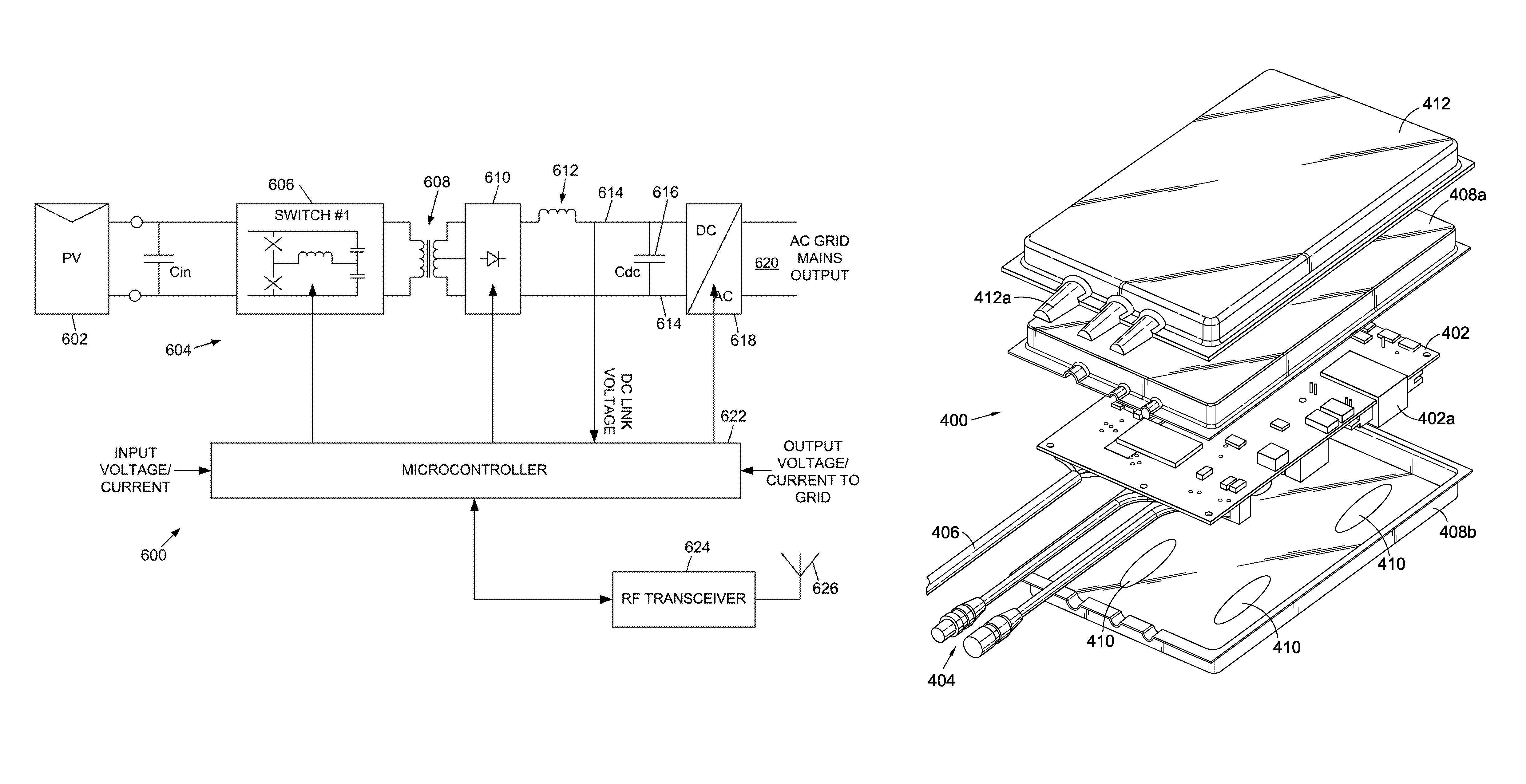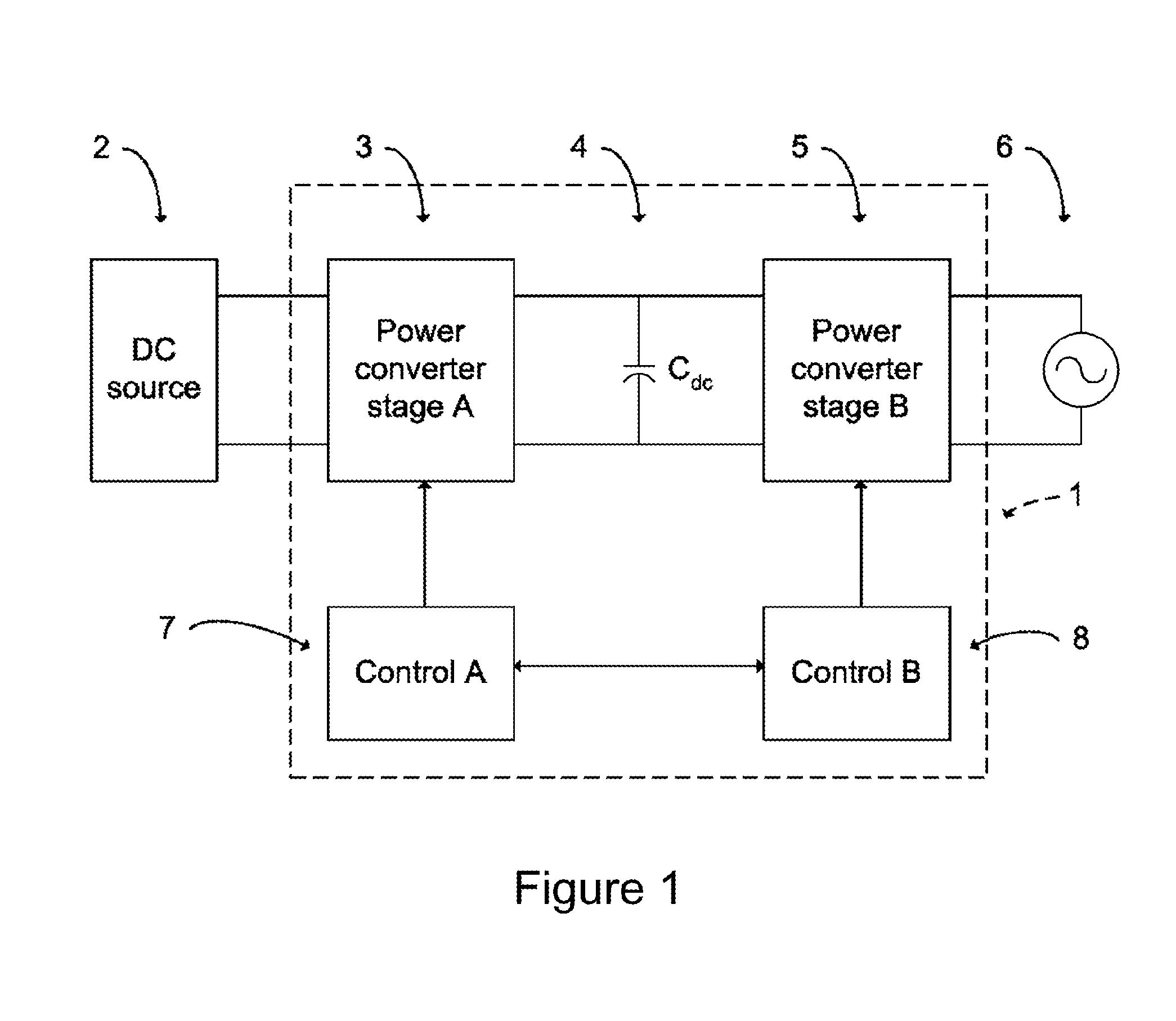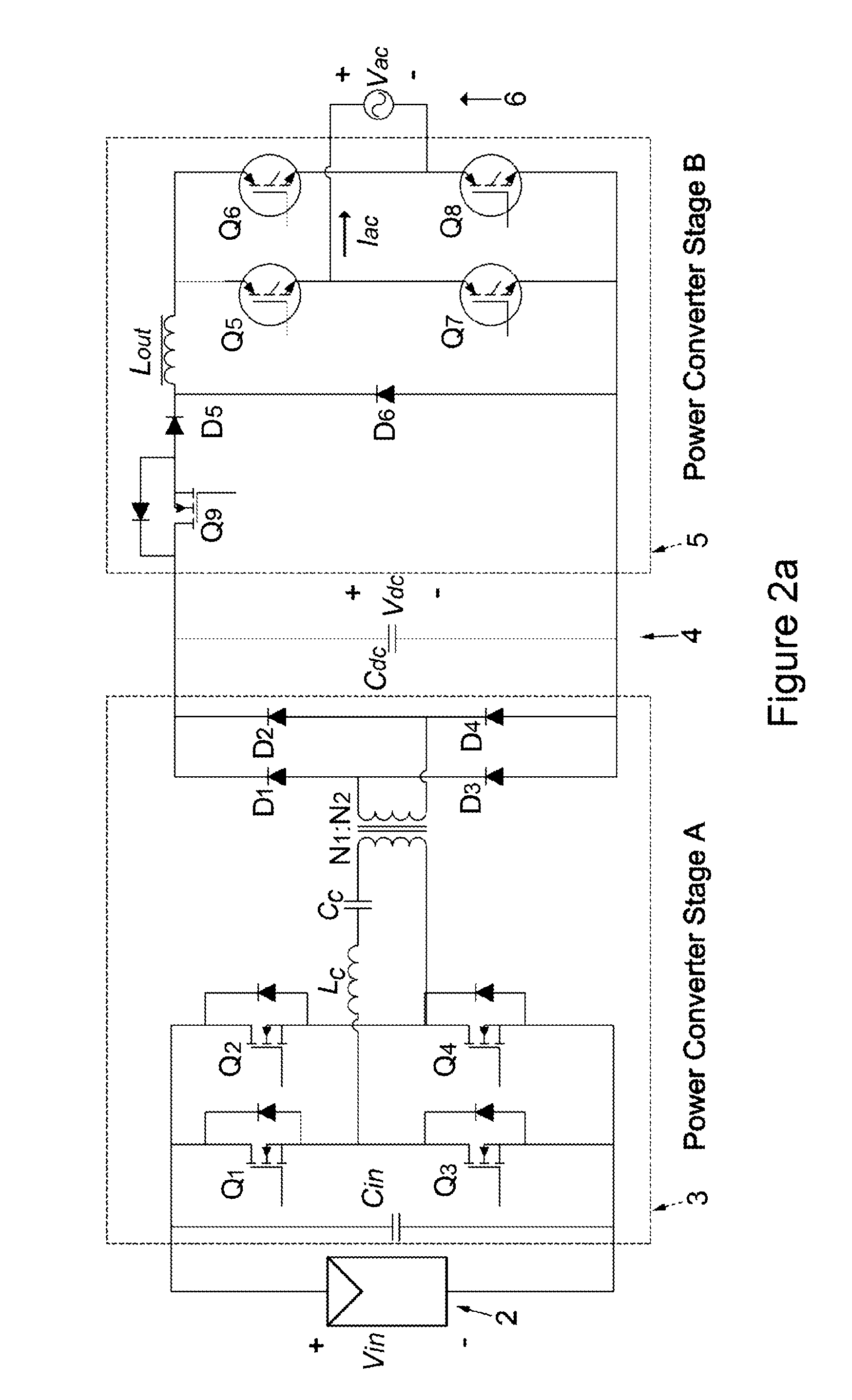Solar photovoltaic inverters
a photovoltaic inverter and solar energy technology, applied in the direction of sustainable buildings, printed circuit aspects, electric apparatus casings/cabinets/drawers, etc., can solve the problems of microinverters adjacent to or on pv panels that bring other difficulties, reliability problems, special difficulties, etc., and achieve the effect of reducing the risk of water ingress through the cables
- Summary
- Abstract
- Description
- Claims
- Application Information
AI Technical Summary
Benefits of technology
Problems solved by technology
Method used
Image
Examples
Embodiment Construction
Power Conditioning Units
[0029]By way of background, we first describe an example photovoltaic power conditioning unit. Thus FIG. 1 shows photovoltaic power conditioning unit of the type we described in WO2007 / 080429. The power converter 1 is made of three major elements: a power converter stage A, 3, a reservoir (dc link) capacitor Cdc 4, and a power converter stage B, 5. The apparatus has an input connected to a direct current (dc) power source 2, such as a solar or photovoltaic panel array (which may comprise one or more dc sources connected in series and / or in parallel). The apparatus also has an output to the grid main electricity supply 6 so that the energy extracted from the dc source is transferred into the supply.
[0030]The power converter stage A may be, for example, a step-down converter, a step-up converter, or it may both amplify and attenuate the input voltage. In addition, it generally provides electrical isolation by means of a transformer or a coupled inductor. In gen...
PUM
| Property | Measurement | Unit |
|---|---|---|
| frequency | aaaaa | aaaaa |
| peak-to- | aaaaa | aaaaa |
| peak-to- | aaaaa | aaaaa |
Abstract
Description
Claims
Application Information
 Login to View More
Login to View More - R&D
- Intellectual Property
- Life Sciences
- Materials
- Tech Scout
- Unparalleled Data Quality
- Higher Quality Content
- 60% Fewer Hallucinations
Browse by: Latest US Patents, China's latest patents, Technical Efficacy Thesaurus, Application Domain, Technology Topic, Popular Technical Reports.
© 2025 PatSnap. All rights reserved.Legal|Privacy policy|Modern Slavery Act Transparency Statement|Sitemap|About US| Contact US: help@patsnap.com



